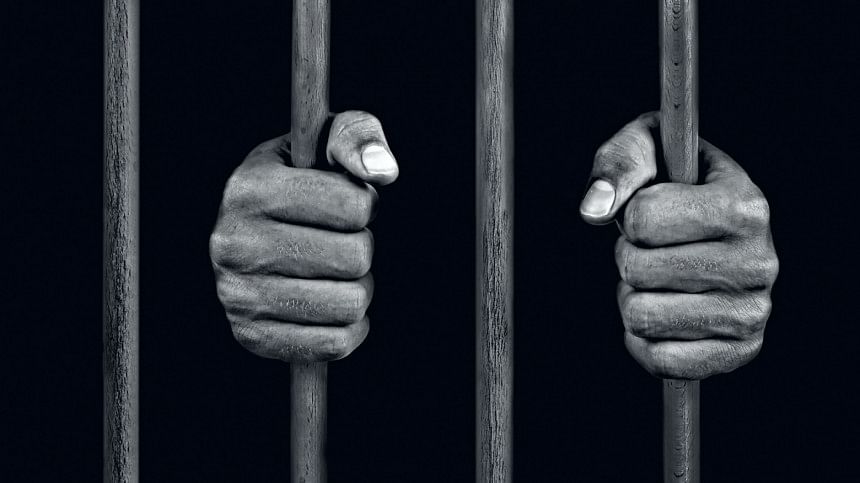Preventing wrongful imprisonment: The importance of introducing digitalised biometric identification

Zahir Uddin is the vice-principal of a madrassa with no criminal record. He was shocked when one fine day the police raided his house and harassed him. He was informed that a court warrant was issued in his name for violating conditions of the bail bond and absconding. Upon inquiry, he came to know that a man named Moddasher impersonated himself as Zahir Uddin when he was being arrested by the Police on a complaint. After being enlarged on bail, "Zahir Uddin" (Moddasher) had absconded and fled abroad.
Zahir Uddin's vigilant and courageous step to ascertain the identity of the person who falsely impersonated him by applying to the relevant authority for conducting an inquiry may have saved him from languishing in jail for years. However, this is not the case for many other unfortunate ones. In the socio-economic reality of Bangladesh, the poor are plausibly the worst sufferers of such kind of wrongful imprisonment. Bablu Sheikh, a day labourer, had to spend 17 years behind the bars instead of Sri Babu because of mistaken identity. Jahalam was a jute mill worker, who spent three years in jail because the Anti-Corruption Commission officials mistakenly identified him as Abu Salek. These are not isolated incidents, and it is very common to erroneously arrest innocent persons by the law enforcement agencies.
In recent years, at least 26 incidents were reported in national dailies, which highlight the incidents of wrongful imprisonment of innocent persons where the accused persons introduce themselves to be someone else, or the accused and the arrested share a similar or same name. This issue has been raised before the Supreme Court of Bangladesh on many occasions. In Rezaul Karim v The State & Others (2007), the Court issued suo moto rule against the investigation officer who submitted charge sheet against Shah Alam Babu instead of Babul on mistaken identity. In Md. Matin Mia v Government of Bangladesh, the Court directed immediate release of Matin Mia, who was wrongly imprisoned instead of convict Abdul Majid.
In Bangladesh Jatiyo Mahila Anijibi Somity v Government of Bangladesh, the Apex Court observed that remedy for detainees of wrongful imprisonment is only available at the High Court Division under section 491 of the Code of Criminal Procedure, which is not easily accessible for poor victims. The Court directed the Government to make appropriate legal provisions to ensure that a quick and less expensive remedy is made available to the victims.
Wrongful imprisonment for mistaken identity causes serious human rights violations. It violates Article 32 of the Constitution of Bangladesh, which says, "[n]o person shall be deprived of life or personal liberty saves in accordance with law". Wrongful imprisonment without legal sanction curtails 'freedom of movement' guaranteed under Article 36. It also violates Article 31 that states, "[..] in particular, no action detrimental to the life, liberty, body, reputation or property of any person shall be taken except in accordance with law." Despite having many constitutional protections, wrongful imprisonment is rampant in the country.
The Identification of Prisoners Act, 1920 and the Jail Code are not adequate to underscore the prison population. The 1920 Act is a sketchy law with a few details. It requires recording finger and footprint impressions as prisoner identification mechanism. The Jail Code prescribes registering body shape, colour, particular marks, marks of injury, for the identification purposes of prisoners.
Prescribed methods for the identification of an accused in these laws are century old. These outdated identifying methods rely on human sense to identify an accused by their physical appearance and lineage, which results in mistaken identification.
With the scientific-technological revolution, crime data management systems have evolved with much accuracy. Most of the countries use digitalised biometric identification for identifying the criminal. The United States Federal Bureau of Investigation (FBI) has been using an integrated automated fingerprint identification system since 1999. Since then, biometric systems have fundamentally changed as to how authorities around the world approach successful identification of suspects and investigation of crimes and criminal activities.
Biometrics is the most suitable tool to identify and authenticate individuals. The term "biometrics" includes fingerprints, palm prints, irises, and facial recognition. A biometric system compares the physical aspect of a person presented for authentication against the data that had already been stored. For example, the finger is placed on a fingerprint reader for comparison against the stored samples. If the fingerprint matches the stored samples, the authentication is successful. The successful identification of criminals means protecting the innocent.
Digitalised biometric identification process is not new in Bangladesh. Different government and non-government bodies use it widely. The Election Commission of Bangladesh stores fingerprint, iris, and facial recognition data when it issues national identity cards for the citizens. The Commission uses fingerprints to identify authentic voters in the election process. The Ministry of Home Affairs also requires the same kind of data when it issues passports. Even telecommunication companies use digitalised biometric identification for their services.
Our policing did not evolve keeping pace with the technological advancements. Still, the police have to bear the brunt of paperwork and rely on human senses mostly. Introducing digitalised biometric identification in police stations will substantially change the process of accused identification.
The police need to take necessary fingerprints, facial recognition data when they first arrest an accused and store it centrally. When a suspected accused is apprehended by the police, they can easily cross-check the data to ensure authenticity with a single click. The Department of Prisons should follow the same procedure to authenticate prisoners. The law enforcement agencies must collaborate with the existing national citizen registration database that delivers identity verification services to qualified public and private organisations.
There are 651 police stations and 68 prisons in Bangladesh. Implementation of a digitalised biometric identification system in these places will not be an economic burden. The price of the equipment for biometric data collection is inexpensive and readily available. The Supreme Court recently provided a direction to introduce digitalised biometric identification in police stations and prisons with an integrated data management system, which can eradicate wrongful imprisonment of innocent persons. With prompt administrative support, it is time to say goodbye to such kinds of miscarriages of justice.
THE WRITER IS AN ADVOCATE, SUPREME COURT OF BANGLADESH AND HEAD OF CHAMBERS, LAW LAB.

 For all latest news, follow The Daily Star's Google News channel.
For all latest news, follow The Daily Star's Google News channel. 



Comments